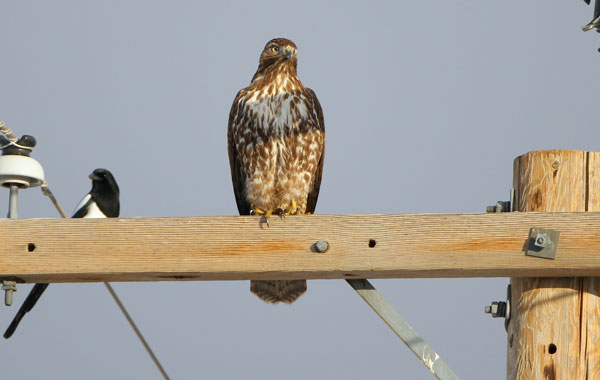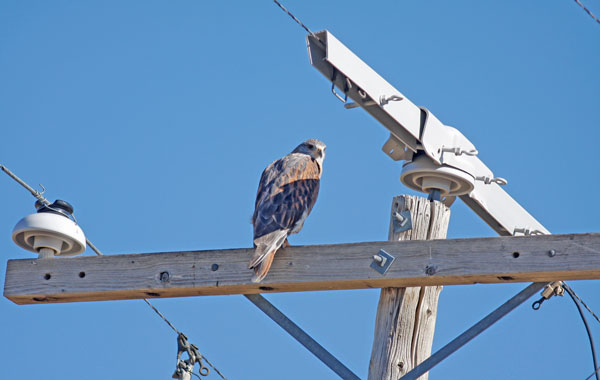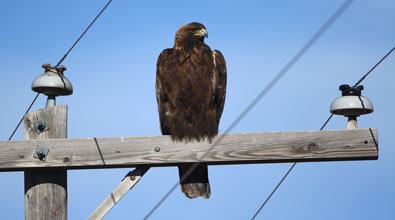Electrocutions:
Bird electrocutions may occur because of a combination of biological, environmental, and electrical design factors. Biological and environmental factors include habitat, bird species (body size, behavior, distribution and abundance), prey availability, and weather. Link to suggested practices
The key electrical design factor is the physical separation between energized parts or energized and grounded parts. If the distance between energized conductors or between an energized conductor and grounded hardware is less than that of the head-to-foot or wrist-to-wrist (flesh-to-flesh) distance of a bird (the wrist is the joint toward the middle of the leading edge of a bird’s wing; the skin covering the wrist is the outermost fleshy part on the wing). Because a bird’s feathers provide insulation when dry, contact must typically be made with fleshy parts, such as the skin, feet, or bill, for electrocution to occur.
Electrocution Minimization
To prevent bird electrocutions from occurring, one of two methods may be used:
For detailed information on avian electrocution causes and solutions, see Suggested Practices for Avian Protection on Power Lines. To read or download a copy of this document, please visit (insert correct link)

1. Framing structures so that there is adequate separation between energized parts or energized parts and grounds to accommodate large perching birds. Where eagles occur, APLIC recommends 60 inches (150cm) of horizontal separation and 40 inches (100cm) of vertical separation.

2. Applying covers on energized parts or grounds where adequate separation is not feasible. Examples of covers include insulator/conductor covers, bushing covers, arrester covers, cutout covers, and jumper wire covers. Cover designs should be evaluated and approved by company engineers prior to use. (Note: bird/animal protection covers are not intended for human protection).
